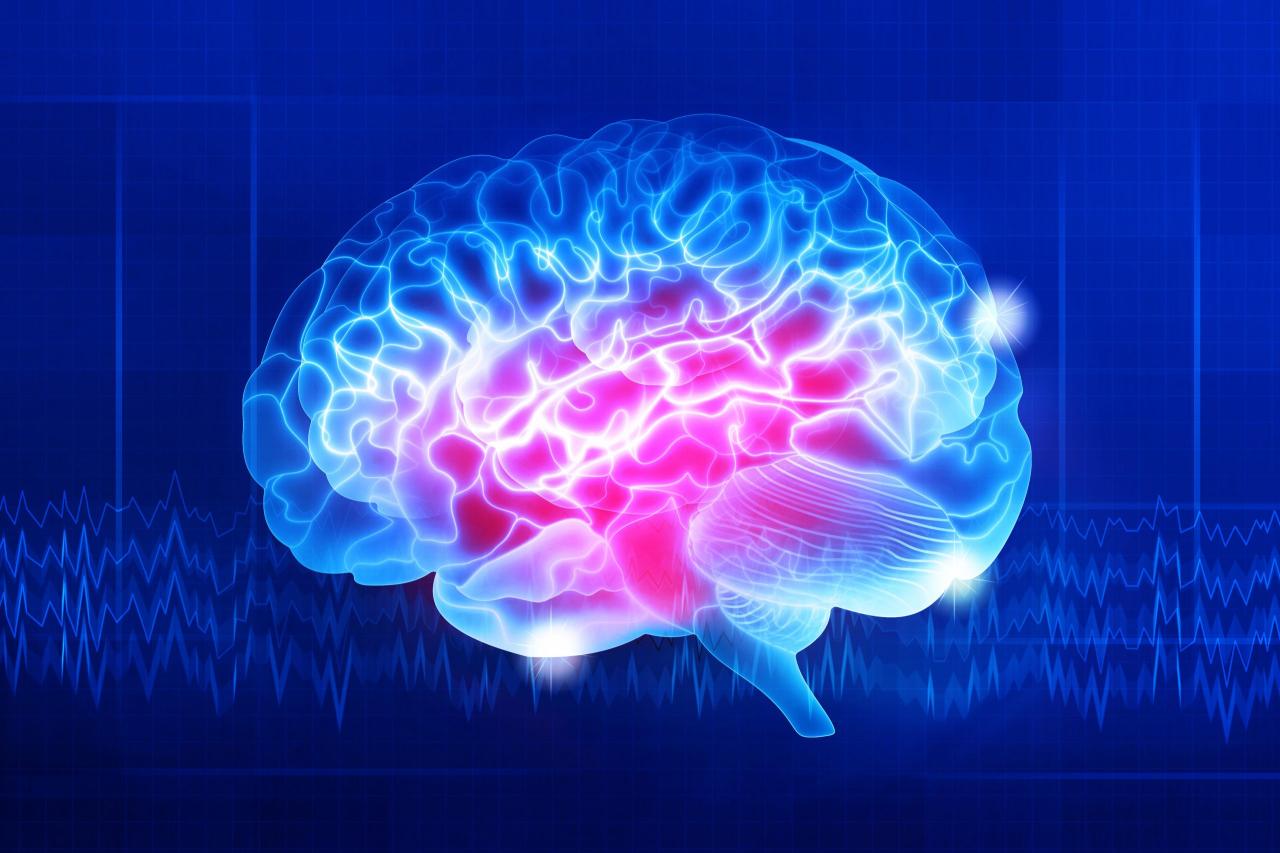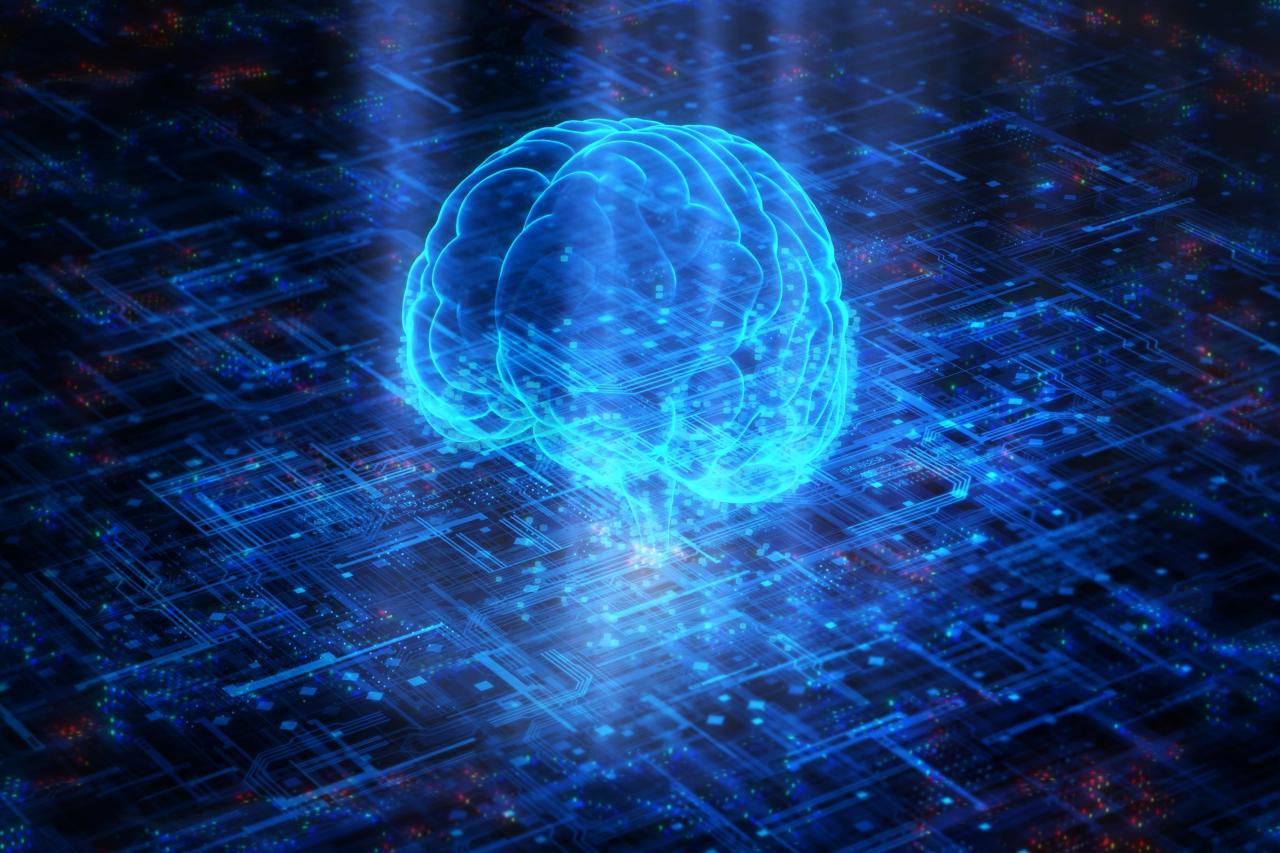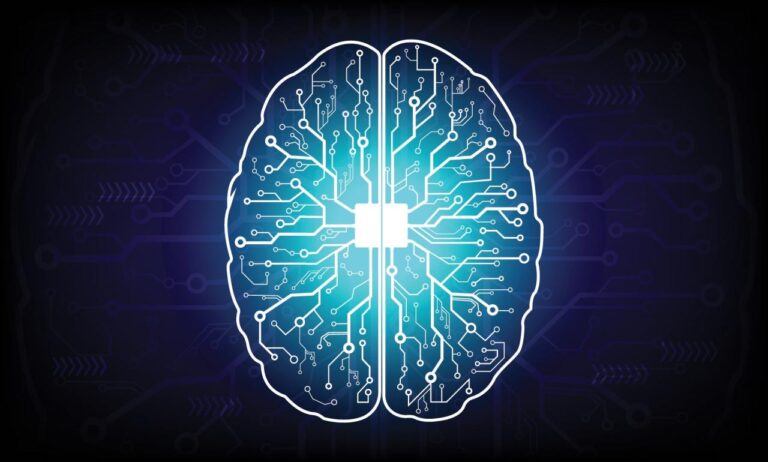The most complex and enigmatic organ in the known universe, the human brain, is slowly but surely yielding its secrets to an emerging field: neurotechnology. What was once the stuff of science fiction, connecting brains directly to computers or restoring lost senses, is rapidly becoming a tangible reality. Neurotech’s new frontiers are not merely advancing our scientific understanding; they are fundamentally reshaping healthcare, human capabilities, and even the very definition of human experience. This comprehensive article delves into the cutting-edge innovations emerging from the neurotech sector, exploring the foundational technologies that drive this revolution, examining their profound impact on medicine and human augmentation, and addressing the critical ethical challenges and exhilarating opportunities that lie ahead. We’ll uncover how manipulating and interacting with the nervous system is not just creating new therapeutic avenues but also opening unprecedented possibilities for human potential.
The Essence of Neurotechnology

Neurotechnology encompasses any technology that directly interacts with the nervous system, particularly the brain, to monitor, record, or influence its activity. It’s a highly interdisciplinary field, drawing from neuroscience, engineering, computer science, and medicine.
A. Brain-Computer Interfaces (BCIs): At the heart of many neurotech breakthroughs, BCIs (also known as Brain-Machine Interfaces or BMIs) create a direct communication pathway between a brain and an external device.
* Invasive BCIs: These involve surgically implanting electrodes directly into the brain. They offer the highest resolution and signal quality, making them suitable for controlling prosthetic limbs with thought, restoring movement in paralyzed individuals, or enabling communication for those with locked-in syndrome. Examples include Utah arrays and neural dust.
* Non-Invasive BCIs: These devices are worn on the scalp and do not require surgery. They are less precise but more accessible for applications like gaming, meditation, or basic control of external devices. Common technologies include Electroencephalography (EEG), Functional Near-Infrared Spectroscopy (fNIRS), and Magnetoencephalography (MEG).
* Semi-Invasive BCIs: A middle ground, often involving electrodes placed on the surface of the brain (electrocorticography – ECoG) or implanted in the skull but not penetrating brain tissue. They offer a balance of signal quality and lower risk than fully invasive methods.
B. Neurostimulation Technologies: These devices apply electrical or magnetic impulses to the nervous system to modulate neural activity.
* Deep Brain Stimulation (DBS): Involves implanting electrodes deep within the brain to deliver electrical impulses, primarily used to treat movement disorders like Parkinson’s disease, essential tremor, and dystonia, as well as some psychiatric conditions.
* Transcranial Magnetic Stimulation (TMS): A non-invasive technique that uses magnetic fields to stimulate nerve cells in the brain, often used for treating depression and obsessive-compulsive disorder (OCD).
* Transcranial Direct Current Stimulation (tDCS): Delivers a low-level electrical current directly to specific brain areas via electrodes on the scalp, explored for cognitive enhancement and treating neurological conditions.
* Vagus Nerve Stimulation (VNS): Involves implanting a device that sends electrical impulses to the vagus nerve, used to treat epilepsy and depression.
C. Neuroimaging Techniques: Technologies that allow us to visualize and map brain structure and function.
* Functional Magnetic Resonance Imaging (fMRI): Detects changes in blood flow in the brain, indicating neural activity, used for research into brain function and mapping.
* Positron Emission Tomography (PET): Uses radioactive tracers to detect metabolic activity in the brain, useful for diagnosing conditions like Alzheimer’s and Parkinson’s.
* Electroencephalography (EEG): Measures electrical activity in the brain via electrodes on the scalp, providing insights into brain states (sleep, alertness) and diagnosing epilepsy.
* Magnetoencephalography (MEG): Measures magnetic fields produced by electrical currents in the brain, offering high temporal and spatial resolution for understanding brain dynamics.
D. Neuroprosthetics: Devices that replace or augment the function of a lost or impaired body part by interfacing with the nervous system.
* Bionic Limbs: Advanced prosthetic arms and legs that can be controlled by thought through BCIs, offering unprecedented levels of dexterity and natural movement for amputees.
* Cochlear Implants: Devices that directly stimulate the auditory nerve, restoring hearing to individuals with severe hearing loss.
* Retinal Implants: Experimental devices designed to restore partial vision to individuals with certain types of blindness by stimulating retinal cells.
E. Optogenetics and Chemogenetics: Advanced research tools that allow scientists to control specific neurons with light (optogenetics) or designer drugs (chemogenetics), enabling highly precise manipulation of neural circuits to understand brain function and potentially treat neurological disorders in the future.
Neurotech’s Transformative Impact Across Domains
The burgeoning field of neurotechnology is poised to revolutionize medicine, human capabilities, and our understanding of the mind, with applications spanning from therapeutic breakthroughs to cognitive enhancement.
1. Healthcare and Medical Treatment
Neurotech is delivering unprecedented therapeutic solutions for a wide range of neurological and psychiatric conditions, offering new hope where traditional treatments have fallen short.
A. Neurological Disorder Treatment:
* Parkinson’s Disease and Essential Tremor: Deep Brain Stimulation (DBS) has become a standard treatment, significantly reducing tremors, rigidity, and dyskinesia, improving the quality of life for thousands of patients.
* Epilepsy: Vagus Nerve Stimulation (VNS) and Responsive Neurostimulation (RNS) devices detect and prevent seizures by delivering targeted electrical impulses to the brain or vagus nerve.
* Chronic Pain Management: Spinal Cord Stimulators (SCS) and other neurostimulation devices block pain signals from reaching the brain, offering relief for chronic pain conditions without reliance on opioids.
B. Psychiatric Disorder Treatment:
* Severe Depression and OCD: Transcranial Magnetic Stimulation (TMS) and Deep Brain Stimulation (DBS) are showing promise for treatment-resistant depression and Obsessive-Compulsive Disorder, offering hope when other therapies fail.
* PTSD and Anxiety: Research is exploring neurofeedback and targeted neurostimulation to modulate brain circuits associated with these conditions, potentially offering new therapeutic avenues.
C. Restoration of Sensory and Motor Function:
* Restoring Movement: BCIs enable paralyzed individuals to control prosthetic limbs or external devices with their thoughts, allowing them to grasp objects, move cursors on screens, and regain independence. Early breakthroughs include controlling robotic arms to feed oneself or write.
* Restoring Hearing: Cochlear implants are a prime example of successful neuroprosthetics, bypassing damaged parts of the ear to directly stimulate the auditory nerve, restoring functional hearing.
* Restoring Vision (Early Stages): Retinal implants are being developed to provide partial vision to individuals with certain types of blindness by stimulating the retina, allowing them to perceive light and shapes.
D. Advanced Diagnostics and Monitoring:
* Early Disease Detection: Neuroimaging techniques combined with AI can detect subtle biomarkers of neurodegenerative diseases like Alzheimer’s and Parkinson’s at very early stages, enabling earlier intervention.
* Seizure Prediction: Wearable EEG devices and implanted sensors are being developed to predict epileptic seizures before they occur, allowing patients to take preventative measures or move to safety.
* Sleep Monitoring: Advanced wearables with neurotech sensors provide detailed insights into sleep stages, brainwave activity, and sleep disorders, helping individuals optimize their rest and address sleep-related health issues.
E. Rehabilitation and Stroke Recovery: Neurotech devices are assisting stroke patients and individuals with neurological injuries in their rehabilitation. Robotic exoskeletons controlled by BCIs help patients regain motor function, while neurostimulation can promote neural plasticity and accelerate recovery.
2. Human Augmentation and Enhancement
While ethically complex, neurotechnology holds the potential to augment human capabilities, pushing the boundaries of what is naturally possible for the brain.
A. Cognitive Enhancement:
* Memory Improvement: Non-invasive neurostimulation (e.g., tDCS, TMS) and even early experimental invasive BCIs are being explored to potentially enhance memory formation, recall, and learning capabilities, particularly in individuals with cognitive impairments.
* Attention and Focus: Devices providing neurofeedback or mild stimulation are being researched for their potential to improve sustained attention and concentration, beneficial for individuals with ADHD or for enhancing productivity.
* Accelerated Learning: Modulating brain states to optimize receptiveness to new information, potentially accelerating skill acquisition and language learning.
B. Enhanced Sensory Perception:
* Artificial Senses: Beyond restoring lost senses, neurotech could potentially create new sensory modalities, allowing humans to perceive data typically inaccessible, such as infrared light or magnetic fields, by feeding this information directly to the brain.
* Haptic Feedback in Virtual Reality: BCIs combined with haptic feedback systems in VR could create more immersive and realistic virtual experiences by providing tactile sensations linked to virtual objects or environments controlled by thought.
C. Human-Computer Symbiosis:
* Direct Digital Interaction: BCIs could allow seamless, hands-free control of computers, smartphones, and smart home devices simply by thinking commands, eliminating the need for keyboards, mice, or voice assistants for certain interactions.
* Telepresence and Remote Control: Enabling individuals to control distant robots or drones with their thoughts, offering new possibilities for exploration, remote work, or performing hazardous tasks.
* Shared Consciousness (Future): While highly speculative and ethically contentious, the long-term vision for some neurotech proponents involves the possibility of shared neural networks or collective intelligence, where individuals could share thoughts or experiences directly.
D. Performance Optimization:
* Athletic Performance: Neurofeedback or stimulation could optimize brain states for peak athletic performance, improving reaction times, focus, and motor control.
* Artistic and Creative Expression: BCIs could open new avenues for artistic creation, allowing artists to translate raw thoughts or emotions directly into music, visual art, or other forms of expression.
3. Military and Defense Applications
Neurotechnology’s potential for human enhancement and control is also being explored by defense organizations, raising significant ethical questions.
A. Enhanced Soldier Performance: Research into neurostimulation to improve soldier alertness, focus, and decision-making under stress or during long missions, potentially reducing fatigue and enhancing cognitive endurance.
B. BCI-Controlled Weapon Systems: Developing interfaces that allow soldiers to control drones, robotic systems, or even advanced weaponry directly with their thoughts, offering faster response times and improved precision in complex combat environments.
C. Remote Telepresence for Hazardous Environments: Using BCIs to allow personnel to remotely operate robots in dangerous or inaccessible areas (e.g., bomb disposal, reconnaissance in contaminated zones) without putting human lives at risk.
D. Advanced Training and Simulation: Highly immersive neurotech-enhanced training simulations that can directly modulate brain states to accelerate skill acquisition for military personnel.
E. Detection of Cognitive States: Technologies to monitor the cognitive load, stress levels, or even intent of adversaries, raising profound ethical concerns regarding surveillance and psychological manipulation.
4. Gaming and Entertainment
Neurotech promises to revolutionize how we interact with and experience digital entertainment.
A. Mind-Controlled Gaming: Non-invasive BCIs allow players to control game characters, navigate menus, or trigger actions using their brainwaves, offering a new level of immersion and accessibility, especially for individuals with physical disabilities.
B. Neurofeedback for Enhanced Immersion: Games or entertainment experiences that adapt in real-time to a player’s emotional state (e.g., fear, excitement) detected via neurotech, creating truly personalized and deeply engaging narratives.
C. Deeper VR/AR Immersion: BCIs could enable more natural and intuitive control within virtual and augmented realities, potentially reducing motion sickness and enhancing the sense of presence in digital worlds.
D. Personalized Content Delivery: Neurotech could theoretically tailor content (music, video, advertising) based on real-time neural responses, optimizing for engagement and emotional impact.
5. Education and Learning
Neurotechnology holds promise for personalizing education and improving learning outcomes.
A. Adaptive Learning Systems: Educational platforms that use neurotech to monitor a student’s cognitive state (e.g., attention, confusion, engagement) and adapt the learning material, pace, and teaching method in real-time to optimize comprehension and retention.
B. Treating Learning Disabilities: Non-invasive neurostimulation or neurofeedback could be explored as complementary therapies for conditions like dyslexia or ADHD by modulating brain regions associated with learning and attention.
C. Skill Acquisition Acceleration: Research into using neurotech to enhance the brain’s plasticity during skill training, potentially accelerating the acquisition of complex motor skills (e.g., for surgeons, pilots, musicians).
D. Personalized Feedback for Teachers: Neurotech could provide educators with insights into the real-time cognitive engagement of their students, allowing for more targeted interventions and teaching strategies.
Challenges and Ethical Considerations of Neurotechnology

The profound capabilities of neurotechnology come hand-in-hand with a complex web of ethical, societal, and practical challenges that demand careful consideration and proactive governance.
1. Ethical Dilemmas of Human Augmentation:
The ability to enhance human capabilities raises fundamental questions about identity, fairness, and human nature.
A. Defining “Humanity”: If technology can fundamentally alter or enhance cognitive, sensory, or emotional aspects of the brain, what does it mean to be human? Where do we draw the line between therapy and enhancement?
B. Equity and Access: Advanced neurotech, especially invasive and complex therapies, will be incredibly expensive. This raises concerns about exacerbating existing health inequalities, creating a “neuro-elite” with enhanced capabilities inaccessible to the majority.
C. Coercion and Autonomy: Could neurotechnology be used to coerce individuals or diminish their autonomy? For example, mandatory neuro-interventions or brain monitoring in certain contexts.
D. Identity and Self: If a BCI directly influences thoughts or memories, how does this affect an individual’s sense of self and personal identity?
2. Privacy and Data Security:
The highly sensitive nature of brain data creates unprecedented privacy risks.
A. “Brain Data” as Personal Data: Brain activity data (brainwaves, neural patterns) is arguably the most intimate and sensitive form of personal information. Protecting this data from unauthorized access, misuse, or commercial exploitation is paramount.
B. Informed Consent: Obtaining truly informed consent for neurotech use is challenging given the complexity of the technology and the potential long-term implications of brain alteration or data collection.
C. Neuro-Surveillance: The potential for neurotech to be used for surveillance, either by governments or corporations, to monitor thoughts, emotions, or intentions, poses a severe threat to cognitive liberty and privacy.
3. Safety, Risks, and Unforeseen Consequences:
Neurotech, particularly invasive forms, carries inherent risks.
A. Surgical Risks: Invasive BCIs involve brain surgery, which carries risks of infection, bleeding, and neurological damage.
B. Unintended Brain Changes: Stimulating or modulating brain circuits can have unintended side effects, alter personality, or lead to long-term neurological changes that are not yet fully understood.
C. Malfunctions and Hacking: A malfunctioning neurodevice could cause harm, and a hacked BCI could potentially manipulate a person’s thoughts, actions, or sensitive data.
D. Neuro-Vulnerability: Individuals reliant on neurotech for function (e.g., paralyzed patients with BCIs) could become vulnerable if the technology fails or is discontinued.
4. Regulatory and Legal Frameworks:
Existing laws are often inadequate for the rapid pace of neurotech development.
A. Lack of Clear Laws: Current laws are not equipped to address issues like the legal status of data derived from BCIs, liability for autonomous neuro-enabled systems, or intellectual property rights over brain-generated content.
B. Standardization: Developing global standards for neurotech safety, interoperability, and data protocols is crucial for responsible development and widespread adoption.
C. Neuro-Rights: Some ethicists and legal scholars advocate for the establishment of “neuro-rights” – specific human rights tailored to protect the brain and its activity in the age of neurotechnology, such as the right to cognitive liberty, mental privacy, and protection from algorithmic bias.
5. Societal Impact and Integration:
Integrating advanced neurotech into society will bring about significant shifts.
A. Human-Robot Interaction: As BCIs enable humans to control robots with their thoughts, the interaction between humans, robots, and the physical environment becomes more intertwined and complex.
B. Psychological Impact: The psychological effects of living with implanted neurodevices or having direct brain-to-computer communication are still largely unknown and require extensive research.
C. Public Perception and Misinformation: Misinformation and sensationalism around neurotech can lead to public fear or unrealistic expectations, hindering responsible development and adoption.
Conclusion
Neurotechnology stands at the precipice of a revolution, poised to fundamentally redefine our relationship with the human brain and, by extension, with ourselves. The breakthroughs unfolding now—from thought-controlled prosthetics and life-changing neurostimulation therapies to the early promises of cognitive augmentation—are reshaping healthcare, enhancing human capabilities, and pushing the boundaries of what it means to be human. This field, fueled by advancements in BCIs, neuroimaging, and sophisticated AI, offers unprecedented hope for those suffering from neurological and psychiatric disorders.
However, the immense power and intimate nature of neurotechnology bring with them profound ethical and societal challenges. Questions surrounding data privacy, the potential for manipulation, issues of equitable access, and the very definition of human identity demand urgent and thoughtful consideration. Navigating these complexities requires a delicate balance between accelerating innovation and establishing robust ethical guardrails and regulatory frameworks.
The future trajectory of neurotechnology promises even more intimate and transformative interactions: seamless, bio-integrated neural interfaces, adaptive and bidirectional BCIs, and AI-powered systems that unlock unprecedented insights into the brain’s mysteries. By embracing responsible innovation, fostering interdisciplinary collaboration, and engaging in open societal dialogue, we can ensure that these powerful tools are developed and utilized for the ultimate benefit of humanity. Neurotechnology’s new frontiers are not just scientific; they are deeply human, shaping a future where the mind’s potential can be understood, healed, and perhaps, profoundly expanded.




